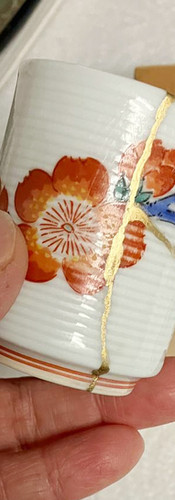

Sun, Feb 08
|Chicago
Advanced Kintsugi: Traditional Method
For those who have completed Kintsugi for Beginners and wish to deepen their practice, this small-group, four-session course offers an immersive experience in the traditional Japanese Kintsugi method. Over four weeks (two hours per session), participants will work entirely with all-natural materials
Time & Location
Feb 08, 2026, 2:00 PM – 4:00 PM
Chicago, 3500 S Morgan St, Chicago, IL 60609, USA
About the event
For those who have completed Kintsugi for Beginners and wish to deepen their practice, this small-group, four-session course offers an immersive exploration of traditional Japanese Kintsugi. Over four weeks (two hours per session), participants will work exclusively with all-natural materials used for centuries—urushi (sap from the Japanese lacquer tree), rice powder, bisque powder, and wood powder.
From the very first step, you will learn to assemble broken ceramics using real urushi lacquer, experience the use of a moisture box for curing, and explore traditional methods for filling, smoothing, and finishing. Participants may bring their own broken ceramic pieces or work with plates supplied by the instructor.
Please note: Urushi is a natural lacquer that may cause allergic reactions in some individuals. If you have concerns, we can provide an alternative lacquer derived from mango sap.
Kintsugi is more than a repair technique—it is a philosophy that honors the story of an object. Rather than concealing cracks, we illuminate them with gold, celebrating each fracture as part of the piece’s unique beauty. Like life itself, the act of mending can render something stronger, more singular, and more deeply cherished. This course offers not only technical training but also a meditative space to experience this art form in its most authentic expression.
Additional materials cost: Students will purchase their material kit during the first class (not included in tuition): $40 if shared with classmates or $70 for an individual kit.

Instructor Bio:
Mami Takahashi is a Japanese multidisciplinary artist and scholar in Chicago. She received her MFA in Contemporary Studio Practice from Portland State University in 2013 and earned a BFA in Japanese Painting from Joshibi University of Art and Design in Japan.
With ongoing artistic research, practice, and teaching, Takahashi explores different approaches to actualize Japanese aesthetics to enhance cultural perspectives in many U.S. communities. She is expanding her creativity to incorporate more specific discourses around society, past and present via a lens of Japanese art. Takahashi also aims to connect Japan and Chicago by teaching traditional and modern art-making techniques.
Kintsugi is a traditional Japanese lacquer/Urushi art form in which gold mixed with natural lacquer-tree sap is used to repair broken ceramics. The practice of Kintsugi highlights the break rather than erasing it and emphasizes that the break, or trauma, is what makes the ceramics more valuable.
Here is a quote about Kintsugi from Linda Muller, a certified life coach:
“Kintsugi is based on the philosophy that breakage and repair are something to celebrate – embracing flaws and imperfections creates a stronger and more beautiful piece of art. Using this as a metaphor for healing ourselves teaches us an important lesson: Sometimes in the process of repairing what feels broken, we become more unique, beautiful and resilient. Kintsugi can be a way to reframe personal challenges. Reminding us that we’re not a victim of our circumstances. Showing us that we can come out on the other side stronger.”
In this beginner’s workshop, participants will learn the basic technique of Kintsugi on a small porcelain plate or a small ceramic plate, which the instructor will provide, to understand the fundamentals of this process. All materials including adhesives in the workshop will be food-safe. We will also use an artificial Urushi (the natural resin/glue collected from the lacquer tree) sap for this beginner’s class, which is safe to touch without allergy reactions.
Work Example:














